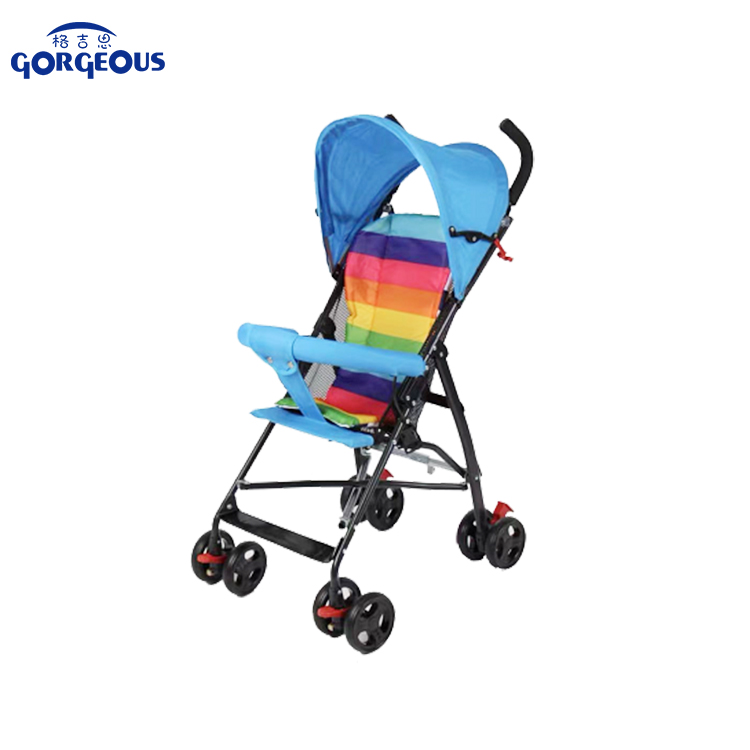Dec . 13, 2024 22:59 Back to list
Essential Components for Kids' Tricycles and Their Maintenance Tips
Understanding Kids' Tricycle Parts A Comprehensive Guide
Tricycles are a beloved mode of transportation for young children, providing them with the freedom to explore their environment while enhancing their motor skills and coordination. As with any vehicle, understanding a tricycle's components is crucial for safety, maintenance, and effective use. This article delves into the essential parts of a kids' tricycle, their functions, and how to care for them.
1. Frame
The frame is the backbone of a tricycle. It provides the structural integrity that supports the child and withstands various stresses during riding. Frames are typically made from lightweight materials such as steel or aluminum, which offer durability without adding excessive weight. When selecting a tricycle, it’s important to inspect the frame for any signs of damage or wear, and ensure it has a robust design suitable for the child’s age and weight.
2. Wheels
Tricycles usually have three wheels two at the back and one at the front. The wheels are designed to provide stability and balance while riding. The size of the wheels can vary depending on the tricycle's design; larger wheels tend to roll more smoothly over uneven surfaces, while smaller wheels are better suited for indoor use. When checking the wheels, look for proper inflation (if they are pneumatic), and ensure that they spin freely without any obstructions.
3. Tires
The type of tires on the tricycle plays a significant role in its performance. Some tricycles come with rubber tires, which offer better traction and a smoother ride on various surfaces. Others might feature hard plastic tires that are more durable but may not provide as much grip. Regularly inspect the tires for any signs of wear or damage, and ensure they are adequately inflated to prevent accidents.
4. Handlebars
The handlebars are crucial for steering the tricycle. They should be at an appropriate height for the child to reach comfortably. Many models also come with grips made from rubber or foam to provide a non-slip surface for small hands. Check the handlebars for stability, and make sure they do not wobble excessively. This will help ensure that the child can control the tricycle effectively.
5. Seat
kids tricycle parts

A comfortable, secure seat is vital for a child's safety during a ride. Most tricycles have adjustable seats to accommodate growing children, allowing the tricycle to be used for several years. The seat should have a backrest for added support, especially for younger kids. Always check that the seat is securely attached to the frame and does not shift while the child is riding.
6. Pedals and Crank
The pedals allow the child to propel themselves forward. They should be designed to fit small feet, often featuring a non-slip surface to prevent slipping. The crank connects the pedals to the chain (if applicable), enabling the pedals to turn the rear wheels. Regular maintenance includes checking for tightness and ensuring that the pedals turn smoothly without grinding or resistance.
7. Chain and Gears
Some tricycles, especially those designed for older children, may have a chain and gear system that allows for different levels of difficulty in pedaling. The chain should be lubricated regularly, and the gears should shift smoothly, if applicable. Teaching children how to use these systems can enhance their riding experience and confidence.
8. Safety Features
Safety is paramount when it comes to children's tricycles. Many models include safety features such as a brake system, which can be either hand-operated or foot-operated. A well-functioning brake system is essential for stopping safely. Additionally, consider tricycles with safety flags or reflective tape to increase visibility.
Conclusion
Understanding the parts of a kids' tricycle is essential for parents and caregivers who want to ensure a safe and enjoyable riding experience for their children. Regular inspections and maintenance of the frame, wheels, tires, handlebars, seat, pedals, and safety features will not only prolong the lifespan of the tricycle but also enhance the safety of the young rider. By paying attention to these components, caregivers can help foster a sense of independence in children as they explore their world on three wheels.
Investing time in learning about tricycle parts can lead to more informed decisions when purchasing or maintaining these beloved toys, ensuring that they bring joy and development for years to come.
-
Premium Wooden Tricycle for Kids: Safe, Classic Play!
NewsAug.23,2025
-
Durable Wooden Tricycle for Kids - Classic & Safe Ride
NewsAug.22,2025
-
Durable Wooden Tricycle for Kids - Classic & Safe Ride
NewsAug.21,2025
-
Wooden Tricycles for Kids: Classic Design & Durable Fun
NewsAug.19,2025
-
Aluminum Alloy Outdoor Running Bike for Kids-Hebei Gorgeous Bike Co., Ltd.|Durable Lightweight Design&Balance Training System
NewsAug.18,2025
-
Wholesale Aluminum Alloy Bike for Kids - Hebei Gorgeous Bike | Durable, Lightweight, Safe
NewsAug.18,2025
